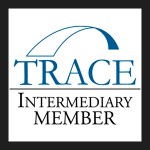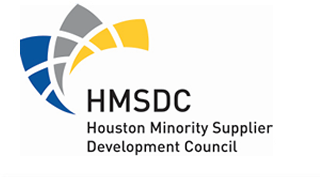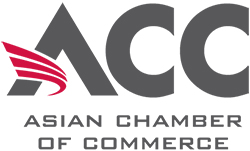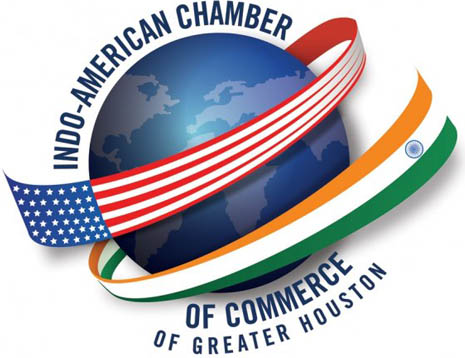Category: Uncategorized
The Key Impact of 49 CFR Part 26 on Your DBE Program Management

American’s small businesses are struggling to stay afloat. Over 61 percent of them report that they face constant financial challenges.
Despite those challenges, these businesses employ 58 million people nationwide. That’s almost half of the country’s private sector employees.
For this reason, the government has made several efforts to protect these businesses. And one of the government’s solutions is the Disadvantaged Business Enterprise Program.
So what does this program have to do with your business?
Section 49 CFR Part 26 has a direct impact on your business.
How so? Continue reading to find out what the key impact of this section is and how you can remain compliant.
What Is a Disadvantaged Business Enterprise (DBE)?
Let’s first start by defining what exactly a DBE is. Understanding this terminology is key to understanding 49 CFR Part 26’s mandate.
A disadvantaged business enterprise is a small business that is owned and operated by members of an economically and socially disadvantaged group.
And pay attention to the wording used here. A “small” business has to meet the Small Business’ Administration’s size criteria. Not only that, but its annual gross receipts can’t exceed $23.98 million.
In order to be “economically disadvantaged,” a business owner’s net worth must not exceed $1.32 million.
For more information about DBEs and DBE programs, take a look at this free resource.
What Does 49 CFR Part 26 Mandate?
Now that we’ve established what a DBE is, we’ll talk about what 49 CFR Part 26 mandates. It has two primary restrictions.
The first restriction forbids discrimination in connection with the award of contracts. The restriction’s protected classes include race, sex, color, and national origin.
So any company that excludes any person from participating in a contract because of that person’s status as a member of a protected class is in violation of this restriction.
The second restriction directly addresses the structure of a DBE program. According to this restriction, no one can administer a DBE program in a way that undermine’s the program’s objectives.
In other words, no one should attempt to circumvent the first restriction.
What Are the Objectives of These DBE Regulations?
The primary objective of these DBE regulations is to curtail discrimination in the award of DOT-assisted contracts. Which leads us to its second objective:
To level the playing field.
America is, after all, perceived as the land of opportunity. But not everyone has equal access to that opportunity.
And here’s yet another one of its objectives:
To prevent the widespread abuse of DBE programs.
According to 49 CFR Part 26.1, only firms that meet the eligibility requirements are allowed to become certified DBEs. This particular clause is relevant to both businesses that want to become DBEs and businesses that structure DBE programs.
So here’s a word of caution to any company that wants to structure a DBE program:
Carefully vet the companies you allow to participate in your program. If you fail to do so, you risk violating this rule.
How Can You Remain Compliant?
In truth, section 49 CFR Part 26 is much more complex. But we’ve laid out the meatiest parts of it here, so you should now have a better understanding of how it affects your DBE program management.
Anyone who has more questions about DBE regulations should read up on DBE certification. If you still have questions after doing so, please contact us for more information.
A Brief Explanation About Disadvantaged Business Enterprise Program

According to the Department of Transportation, a disadvantaged business enterprise (DBE) is one in which “socially and economically disadvantaged individuals own at least 51%.” What you may not realize, however, is that this program is often abused.
Nearly a quarter of all fraud cases investigated by the Office of the Inspector General are related to DBE program abuse.
If you want to ensure that your company stays compliant as a DBE, it’s important that you first understand the program and then learn about what’s needed to stay compliant with its rules.
What is the DBE Program?
Congress established the program in 1982. The program is organized under the Department of Transportation, meaning it applies to all businesses who pursue contracts that involve funding from the DOT.
The goal of the program is to help business owners from disadvantaged backgrounds earn government contracts to support their business.
Every federal and state department that takes money from the Department of Transportation sets their own annual goals for awarding DBE contracts. Typically 10% of DOT contracts are required to go to DBEs. These goals can also apply to subcontractors used on larger projects that require them.
How Do You Become DBE Certified?
To achieve DBE certification as a business owner, you must be part of a population group that fits the criteria for being disadvantaged. Groups of people who fit this description, according to the DOT, are:
- African Americans
- Native Americans
- Women (added to the program in 1987)
- Hispanics
- Asian-Pacific and Asian-Subcontinent Americans
Also, your personal net worth as a business owner cannot exceed $1.32 million. Your business receipts must not exceed $23.98 million.
Assuming you meet all these requirements and want to become a part of the DBE program, the next step is to apply at the local DBE office. Here in Texas, for example, the program is coordinated through TxDOT.
In order to apply for the DBE program through TxDOT, you need to fill out a form using their online diversity management system.
Once you submit your application, expect a bit of a delay for processing. About 90 days is typical, but in some cases it may happen sooner. Because of the lag time, it’s best to send in your application as soon as possible so that you can start bidding on DBE-designated contracts.
There will also be an interview and examination process involved where your application will be reviewed to make sure it is correct.
Find a Specialist for DBE Compliance
Once you become a part of the DBE program, you can begin to advertise this fact and take part in the bidding process for contracts designated to DBEs.
After approval, you’ll need to submit a form every year to show that there haven’t been significant changes to your business that would remove your eligibility.
If you’re interested in getting some help with the DBE program, get in touch with our expert team at PPG. We will walk you through each step of the DBE certification process to make sure your application goes as smoothly as possible.
21st Century Matchmaking for Small Businesses

by Shataria Starr

The lives of single people changed the day the first online dating website launched in the 1990s. Suddenly, a single person who ordinarily had a narrow dating pool—limited to a city or one side of town—now had a broad pool of potential matches across the globe. Today, dating sites like Match.com and eHarmony, have exploded with millions of subscribers who accept this avenue as a legitimate way of meeting and dating people.
The popularization of these dating sites ironically parallel what’s happening in the business world—globalization through technology-based solutions. Web-based technology that’s bringing so many singles together around the globe is the same technology that’s positioning business-to-business internet matchmaking to be the 21st century answer to the creation of partnerships.
One of the biggest challenges for small businesses bidding on construction-related projects is having a complete catalog of skillsets and/or experience to bid on a scope of work. Solutions, like partnerships, are utilized to combine project experience and business intelligence, making it possible to bid on a scope of work, then successfully fulfill contractual obligations after the job is awarded.
As easy as it may sound to collaborate with a similar business, the truth is, finding the right partner can be tough because what makes a partner “right” changes from project to project. With so many things to consider, like the city and state in which the project is occurring, types of experiences favored by the project administrator, and the importance of local contracting, to name a few considerations, small businesses may find it difficult to identify an ideal partner. And in the absence of technology, finding a partner is limited to word-of-mouth, which is equivalent to, in the dating world, your aunt introducing you to a “great catch” from church. With technology, a business’s partnering pool expands exponentially from just local great catches to national ones.
Consider this, on July 6, 2012, President Obama signed a $105 billion Surface Transportation Bill into law at a ceremony at the White House. The two-year Surface Transportation Bill will sustain current levels of funding for the construction and repair of bridges, highways and other road projects in every U.S. state until 2014. The
significance of this bill is tied to the increase in transportation projects, job creation, and opportunities for small businesses. With upcoming opportunities like the ones that will spring out of the Surface Transportation Bill, now is the time for small businesses to begin exploring (and using) matchmaking technologies that’ll position them to more competitively bid in their own states as well as others.
The Principle Partnering Group, LLC is gearing up in a different way to prepare for upcoming opportunities. We, like many other small businesses, have had successes and learning experiences associated with partnering. And while the successes are nice, it’s the learning experiences that inspire ingenuous solutions. PPG will soon announce a major initiative, years in the making, designed to match-make businesses across the nation. Users of this matchmaking site will have power tools to search by primes, subs, zip codes, cities, states, certifications, and search for upcoming opportunities.
Remember, the purpose of technology in business is to increase the bottom line—whether it’s saving time on processes, reaching more clients with less effort, or being accessible. It doesn’t matter how you’re using it, it just matters why you’re using it—to grow and become more profitable. Both technology and partnering will be the key differentiators of organizations who realize substantial increase in their business versus those who maintain or fall behind. It’s clear: Now is the time to step into the 21st century of matchmaking for small businesses.




